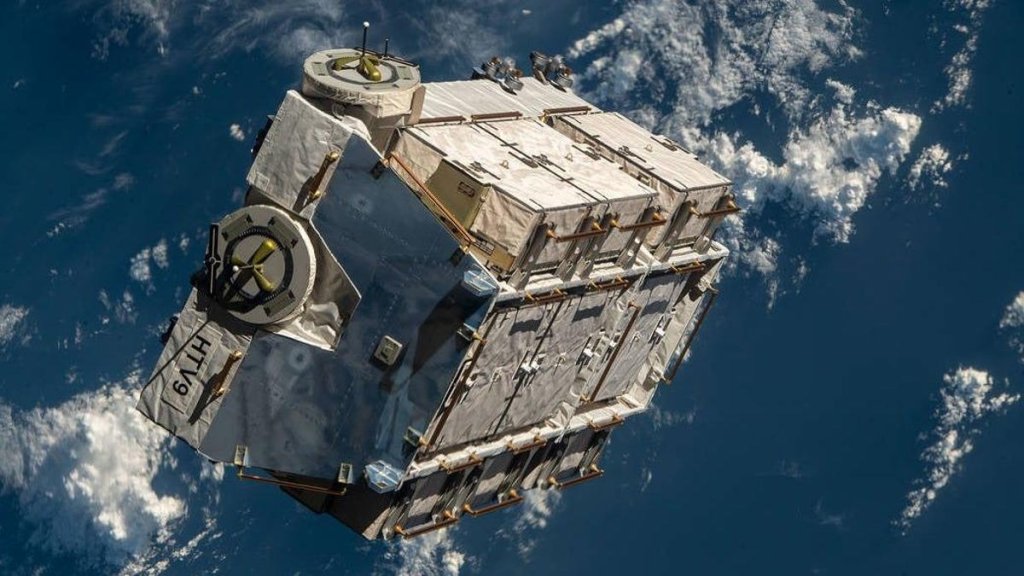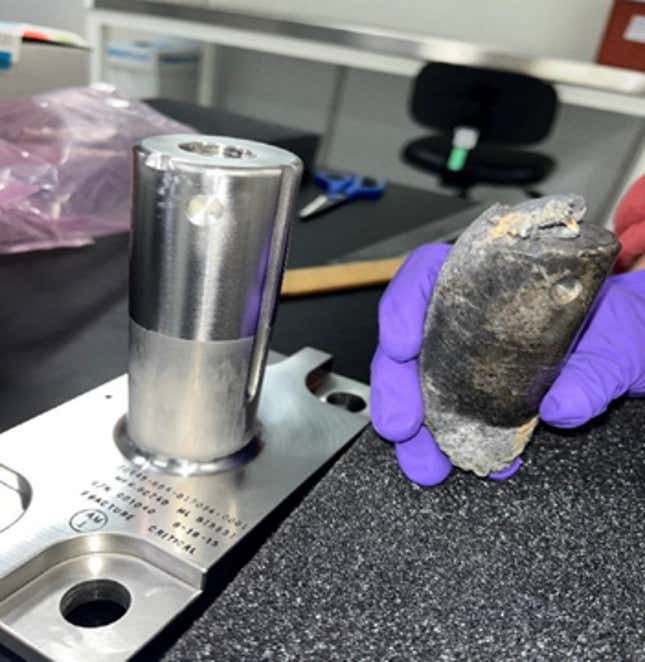Piece of ISS Battery Pallet Crashed Through Florida Home, NASA Confirms

Piece of ISS Battery Pallet Crashed Through Florida Home, NASA Confirms (Image Credit: Gizmodo-com)

Well, this is awkward. A NASA investigation confirmed that a small piece of trash tossed from the International Space Station (ISS) survived atmospheric reentry and ended up in a Florida home. This is a rare case of space junk causing damage on Earth, and the homeowner may be seeking legal action.
In March 2021, NASA discarded a massive pallet of old batteries from the orbital lab, hoping that it would burn up through Earth’s atmosphere. Three years later, a piece of metal hardware unexpectedly survived the heated journey, and crashed through the roof of a family home in Naples, Florida.
Related Content
The homeowner reported the incident last month, and NASA retrieved the object for analysis. In a blog update on Monday, the space agency confirmed that, upon studying the object’s dimensions and features, it was indeed a fragment from the flight support equipment used to mount the batteries on the cargo pallet.
The cargo pallet contained nine batteries and weighed roughly 5,800 pounds, making it the heaviest piece of trashed tossed from the ISS. It had been thrown out by the Canadarm2 robotic arm and left to tumble towards Earth in an uncontrolled reentry. The chaotic fall from orbit finally came to an end when the cargo pallet reentered on March 8 around 3:29 p.m. ET somewhere above the Gulf of Mexico.

Around the same time, Alejandro Otero reported that a cylindrical-shaped object crashed through his house in Florida, creating a hole through the ceiling and the floor. The object that survived the reentry is made of the metal alloy Inconel, and weighs around 1.6 pounds, is 4 inches in height, and 1.6 inches in diameter, according to NASA.
“The International Space Station will perform a detailed investigation of the jettison and re-entry analysis to determine the cause of the debris survival and to update modeling and analysis, as needed,” NASA wrote in its blog update.
Sure, an analysis seems sensible but When NASA discarded those batteries into space, it hoped the entire pallet would burn up upon reentry or that any surviving fragments would land in uninhabited areas. Unfortunately, the space agency got caught littering and now it has to deal with the consequences; the homeowner may file a claim through the Federal Tort Claims Act, asking for reimbursement for the damage done to his home, NASA told SpacePolicyOnline.
The chances of space junk ending up on someone’s property are slim, but not zero. On average, 200 to 400 human-built objects reenter through Earth’s atmosphere every year, and space agencies commonly accept a 1 in 10,000 probability threshold for the casualty risk of a single uncontrolled reentry, according to ESA.
As the space industry continues to grow, so does the amount of debris raining down on Earth, and the chances of it resulting in injury is increasing. Although there have been no space junk casualties so far, a recent study suggested there’s a 10% chance of one or more casualties from falling rocket parts in the next decade.
Related article: Deaths From Falling Rocket Debris Are Highly Unlikely—but That’s Changing
The case of the old ISS batteries is somewhat of an anomaly. The cargo was launched to the space station in May 2020 by a Japanese ship to help astronauts replace the old nickel-hydrogen batteries with new, more efficient lithium-ion batteries. The old batteries were supposed to be placed inside a Japanese HTV cargo ship for proper disposal. However, a backlog in the disposal of this type of equipment from the ISS forced NASA to place the batteries inside a cargo pallet and throw them out using the space station’s robotic arm, which led to their uncontrolled reentry.
“NASA remains committed to responsibly operating in low Earth orbit, and mitigating as much risk as possible to protect people on Earth when space hardware must be released,” the space agency wrote.
For more spaceflight in your life, follow us on X and bookmark Gizmodo’s dedicated Spaceflight page.





